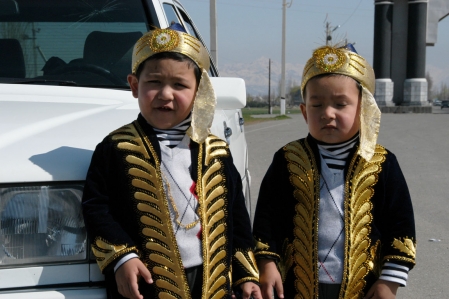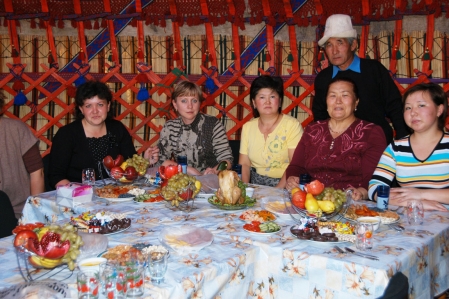Kyrgyzstan - language population, animals- and plant life
Kyrgyzstan is a country in Central Asia. It is bordered to the north by Kazakhstan, in southeast China to the south of Tajikistan and Uzbekistan in the west. The capital is Bishkek.
Language
The Turkic languages, Turkish languages or Türksprachen in Eurasia is a widespread language family of about 40 relatively closely related languages, some 150 million speak the mother tongue (up to 180 million speak a second language). Kyrgyzstan is located in the Tian Shan mountains to reach the highest elevations 7,439 m (Dschengisch Tschokusu) and 7,134 m.
Population
The population is concentrated mainly in the north and Tschüital the Ferghanatal in the south and to a lesser extent in mountain valleys such as the large Yssyköl lake. Among the most important rivers in the country include the Naryn, the Tschüi and Talas.
Until a height of 1,500 meters, the steppe country, but by extensive irrigation systems had been reclaimed. From ca.1.500 m are alpine meadows and pastures, up to the snow fields and glaciers heranreichen. The forests are at altitudes from 1500 to 4000 meters and accommodate approximately 120 tree and shrub species. With about 4% woodland Kyrgyzstan is one of the waldärmsten Asian countries. The climate in Kyrgyzstan is dry and hot summers and cold winters marked. The daily temperature variations are significant. In the south of the country are in summer temperatures of +45 ° C measured, while in winter the temperature at -18 ° C can fall.
The Kyrgyz (64.9% of the population) are a Turkic and are committed to the predominantly Sunni Islam. In addition to live Uzbeks (13.8%), Russians (12.5%), Dungan (Chinese Muslims, 1.1%), Uyghur (1.0%), Ukrainians (1.0%), Tajiks (0.9 %), Tatars (0.9%), Kazakhs (0.9%) and members of other ethnic groups, such as 57,000 Mescheten, in the country. At the beginning of the 1990s were still about 100,000 Germans (Kirgisistandeutsche) there, they are now the majority emigrated to Germany, but there are still communities in small German villages (eg Luxembourg and valley. In 1999, there were about 20,000 Germans (population 0.4%) in Kyrgyzstan. 2007, their number with about 12,000 estimated.
Animals and plants
Despite its limited forest resources, but Kyrgyzstan is home to the largest walnut forests in the world. In the woods live deer, bear, martens, wild boar, wolf and lynx. In the high altitudes there is the rare snow and Marco Polo sheep. The snow leopard population broke due to massive poaching in recent times strong. Marmots are in the high meadows widespread, and since the collapse of the Soviet mass livestock grazing penetrate Wolves back in the pasture areas A. In higher-lying country's divisions mainly live birds of prey, such as Schwarzmilane, griffon vulture and several eagle and falcon species. Since the mid-80s wanders the Hirtenmaina (is a songbird from the family of starlings and will also shepherd called Star) increased from India to Kyrgyzstan one.















